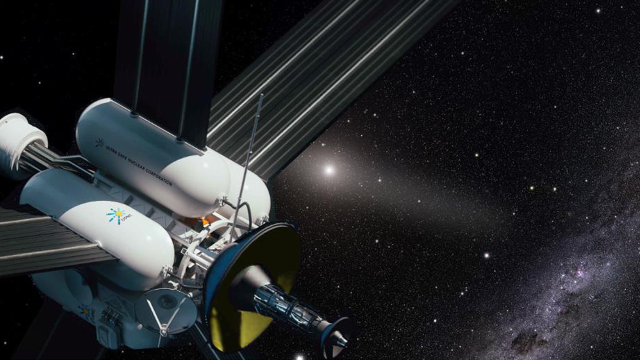NASA is always looking for new ideas, and it’s just selected the latest projects to fund under its Innovative Advanced Concepts program. Six research teams earned Phase II grants to continue developing their futuristic designs, which include a strategy for destroying Earth-threatening asteroids and a plan to let astronauts produce their own medicines in space.
NASA announced the first phase of the project in January, with 14 recipients earning $US175,000 grants. For Phase II, only six were selected for more funding, receiving up to $US600,000 over a period of two years to further develop their concepts.
“The concepts selected under NASA’s Innovative Advanced Concepts program will help empower researchers to usher in new technologies that could revolutionise exploration in the heavens and improve daily life here on Earth,” NASA Administrator Bill Nelson said in a statement.
The Phase II grant recipients reflect NASA’s interest in further exploring Earth, protecting our planet from incoming threats, and looking after astronauts’ health in space.
Planetary defence
Earth is basically defenceless against impacts from space rocks. In September 2022, NASA’s DART mission successfully deflected a non-threatening asteroid, slightly altering its orbit using kinetic impact in a test of planetary defence.
That’s one way to protect Earth, but a team from the University of California is suggesting another, more violent way. Their approach to planetary defence is to pulverize the incoming asteroid and rely on Earth’s atmosphere as a shield from the resulting fragments.
Their concept is to use an array of small, hypervelocity kinetic penetrators to break up an asteroid into smaller fragments, which would burn up when entering Earth’s atmosphere due to extreme heat and pressure. “Phase II of this project involves greatly expanding upon the above simulation efforts, as well as an exploration of key steps on the roadmap towards an operational planetary defence system,” NASA wrote.
Lunar views
The best spot to place a radio telescope is on the Moon’s far side, away from Earth’s pesky, interfering radio waves. FarView is a concept for a radio observatory installed on the far side of the Moon, made up of 100,000 antennas stretched across 200 square kilometres.
The telescope would be made with local lunar resources, like metals present in the lunar regolith. “For our Phase II proposal, we will advance the FarView Observatory concept through modelling and experimentation with a goal to resolve the major issues regarding both the science performance and the manufacture processes that will enable building FarView on the lunar far side,” the team from Lunar Resources wrote in a statement.
Vertical landings
This concept is about the future of aircraft. A team from the Massachusetts Institute of Technology is developing nearly silent electroaerodynamic thrusters that would be used for vertical takeoff and landing aircraft, for both passengers and cargo. One of the main obstacles in delivering this concept has been the noise created by the electric aircraft, which is why the project aims to build a quiet one.
Using their second phase funding, the team members want to design, build, and fly an aircraft propelled by electroaerodynamic thrusters for a few minutes.
Space pharmacy
During long stints in Earth orbit or in deep space, astronauts won’t have ready access to medicines. This futuristic concept wants to empower astronauts to create their own drugs using bacteria during spaceflight missions.
The Astropharmacy could help treat radiation exposure or sustain astronauts’ bone health, two common risks of space travel.
“These new awards showcase the breadth of how NIAC-supported concepts can change exploration,” Jim Reuter, associate administrator for NASA’s Space Technology Mission Directorate, said in a statement. “From revolutionary propulsion systems for deep-space missions to advances in aviation to change how we travel here on Earth, these technologies would radically expand our capabilities in air and space.”
